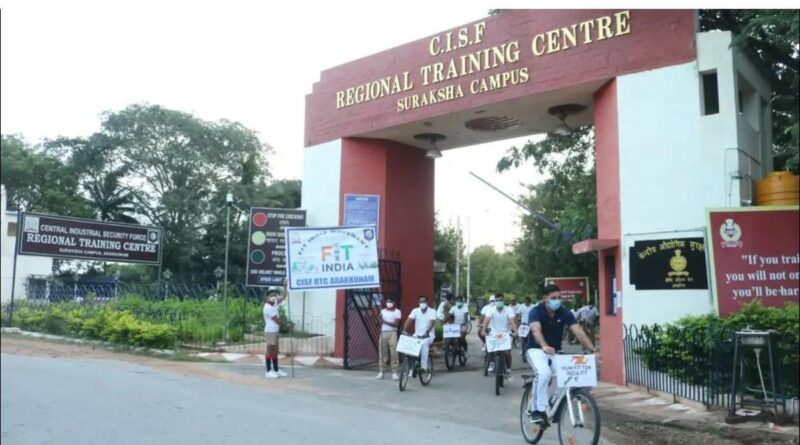CISF names Recruits Training Centre in Arakkonam after Rajaditya, the Chola prince who was killed in Thakkolam

Rajaditya, the son of Parantaka I, was killed by an arrow of the Ganga prince Butuga, an ally of the Rashtrakutas.
The Recruits Training Centre (RTC) of the Central Industrial Security Force (CISF) in Arakkonam has been renamed Rajaditya Cholan (RTC), Thakkolam, in memory of the Chola prince. Rajwinder Singh Bhatti, Director General of the CISF, issued the order for the change of name on February 24
The battle at Thakkolam took place in 949 CE between the Cholas and Rashtrakutas. Rajaditya, the son of Parantaka I, was killed by an arrow of the Ganga prince Butuga, an ally of the Rashtrakutas. Rajaditya earned the title ‘Yanaimel Thunjiya Devar’ (The king who died on the top of an elephant) in the Chola inscriptions at Kumbakonam and Thirunageswaram. Kalki, the author of Ponniyin Selvam, which was made into a film, also makes a reference to Yanaimel Thunjiya Devar.
K.A. Nilakanta Sastri, the author of Chola, says that there was much hard fighting, and the Chola army lost the battle mainly on account of a well-aimed arrow of Butuga having fatally wounded Rajaditya.
“The heroic Rajaditya, the ornament of the solar race, having shaken in the battle the unshakable Krsnaraja with his forces, by means of his sharp arrows following in all directions was himself pierced in his heart while seated on the back of a large elephant by the sharp arrows of the enemy, and thus winning the praise of the three worlds, he ascended the heaven of heroes in a tall vimana,” writes Sastri, quoting the Thiruvalangadu plates. Akkur inscriptions describe him as Muvadi Chola Rajaditya.
“Dying in the battlefield while fighting a vigorous war with piercing arrows in the chest is the most longed and celebrated end for any warrior in the Tamil land. Such brave men are considered as blessed individuals,” said R. Kalaikkovan, director, Dr. M. Rajamanikkanar Centre for Historical Research.
Dr. Kalaikovan said Rajaditya was a well-known warrior and a good administrator, and his father Parantaka had stationed a sizeable army at Thirunavalur under his leadership to protect the northern boundary as he had expected invasion from the Rashtrakutas.
“While staying there, Rajaditya and his army personnel were involved in several socio-cultural activities in improving the surrounding villages. Temples were built and long strips of fallow lands were brought under cultivation providing job opportunities to the village folk that in turn increased the income of the villages and the size of the cultivable land,” he said.
The long wait came to an end in C.E. 949. The fierce fighting took the life of Rajaditya. “Though the battle was lost, the heroic death of Rajaditya made its mark in the mind of Tamils and the Chola hegemony continued to flourish for another 250 years expanding in all directions annexing several surrounding and far away kingdoms. The defeat at Thakkolam faded away in history but for the heroic end of the great warrior Rajaditya Chola,” explained Dr. Kalaikovan.
The fighting spirit of Rajaditya remained a guiding force to the Cholas. “Attempts were made during the reign of Gandaraditya, the second son of Parantaka I, to revive the power of the Cholas. After him, Arinjaya, the third son of Parantaka I, continued the efforts. But he died in a battle in Arrur, possibly the present-day Tiruvarur. Only the reign of Sundara Chola marked the recovery of the Cholas from the disasters of the Rashtrakuta invasion and became an imperial power during the rule of Rajaraja I, his son,” writers Sastri.
A stone inscription at the Thiyagarajaswamy temple at Tiruvottiyur in Chennai narrates the story of the Chola warrior, Vallabha alias Vellangumaran, who was supported to take part in the battle at Thakkolam. Even though he was a close friend of Rajaditya, he failed to be at the front. As an atonement for his failure to be on the side of his friend, he became an ascetic.
Published – February 25, 2025 07:07 pm IST

